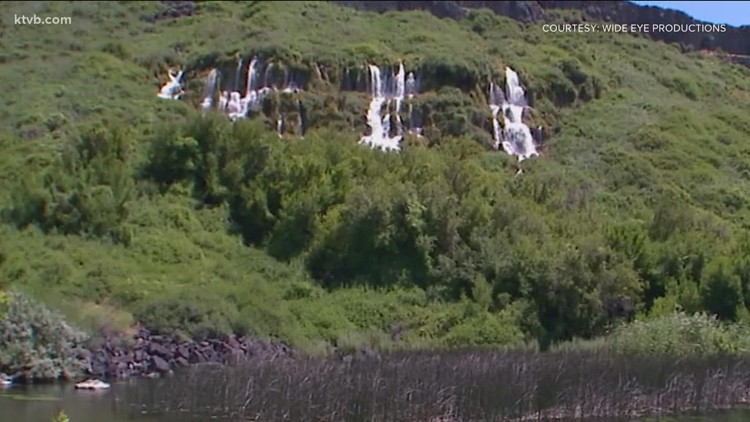HAGERMAN, Idaho — (Editor's note: This story has been updated to clarify and correct sections of the report.)
Idaho has an abundance of geological formations. If you look at a topographic map you recognize how much variation we have above the ground. Under the ground can be more interesting as Geologists have discovered after years of research and study.
One of the more unique areas is in southern Idaho and is part of the Snake River Aquifer. This is an area where water from underground comes out the side of the cliffs and runs down to the Snake River. This water starts out farther to the east from a variety of sources according to Geologist Shawn Willsey MS, a professor of Geology from the College of Southern Idaho. The water drains into the Snake River Plain but also sinks into the basalt lava fields in eastern Idaho. The lava fields were part of geologic activity several thousand years ago.
One such area is known as the Lost River. Water goes from the Mackay area to near Arco where it soaks into the ground and the river is lost. Craters of the Moon is another example where the surface water sinks underground.
Willsey says the rate of the movement of ground water varies greatly but some is estimated to take as much as a few hundred years to reach this part of the Snake River Plain. All the while, this water is helping fill the underground aquifer.
When early pioneers on the Oregon trail stopped to marvel at the amount of water coming straight out of the side of the cliff. They gave the area a descriptive name that we still use to this day. Thousand Springs. The cascading water coming from the side of the cliff Willsey says, is because the water has a general flow. However the Snake River turns abruptly north, and the water pushes out to form Thousand Springs.
With the number of wells and irrigation, the volume of water from Thousand Springs is much less than it was in the early 1800’s. However, several places along the canyon walls still have water gushing out all year long.
Watch more weather:
See the latest weather forecasts and news in our YouTube playlist:



